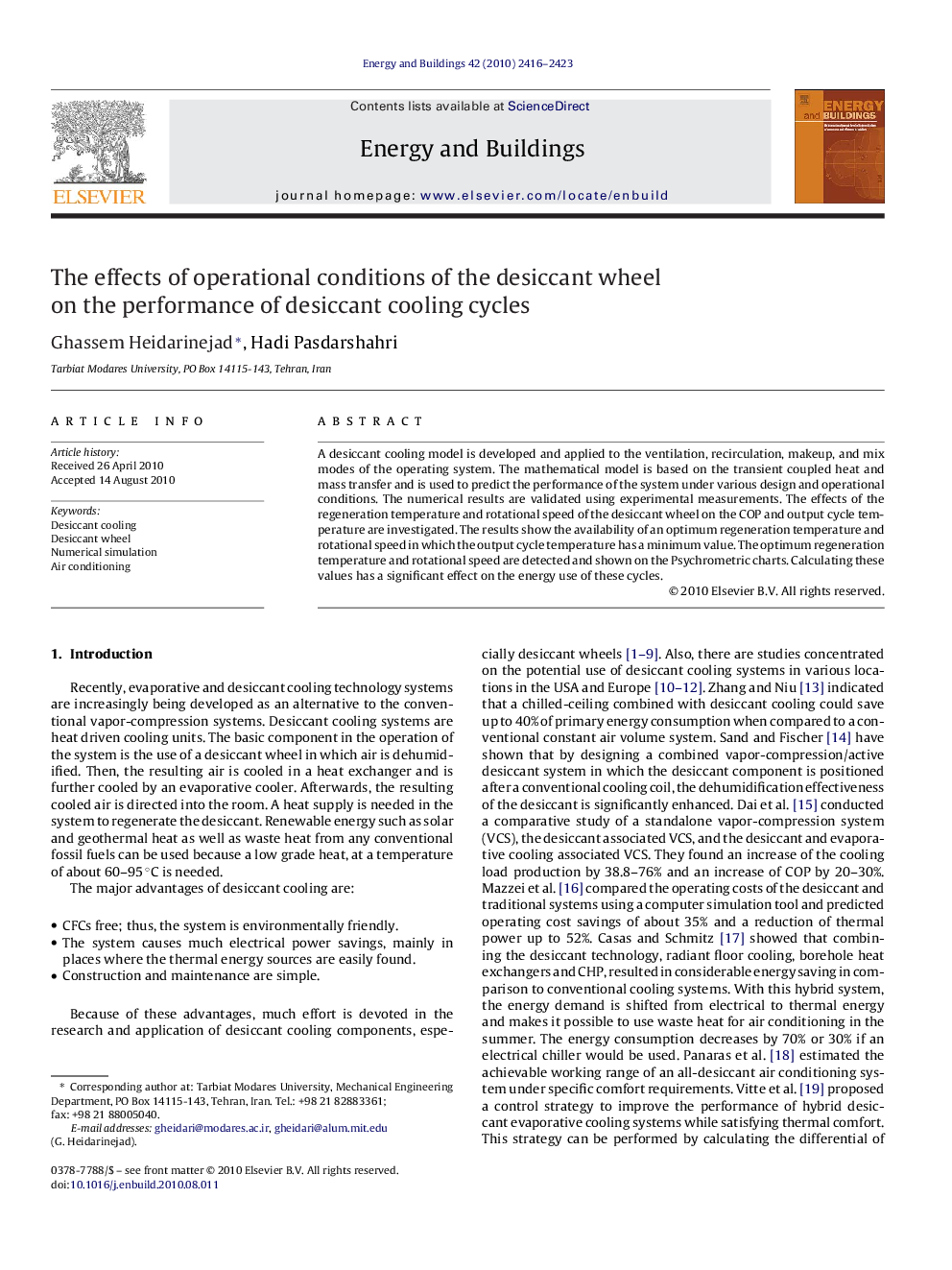| Article ID | Journal | Published Year | Pages | File Type |
|---|---|---|---|---|
| 264571 | Energy and Buildings | 2010 | 8 Pages |
A desiccant cooling model is developed and applied to the ventilation, recirculation, makeup, and mix modes of the operating system. The mathematical model is based on the transient coupled heat and mass transfer and is used to predict the performance of the system under various design and operational conditions. The numerical results are validated using experimental measurements. The effects of the regeneration temperature and rotational speed of the desiccant wheel on the COP and output cycle temperature are investigated. The results show the availability of an optimum regeneration temperature and rotational speed in which the output cycle temperature has a minimum value. The optimum regeneration temperature and rotational speed are detected and shown on the Psychrometric charts. Calculating these values has a significant effect on the energy use of these cycles.
